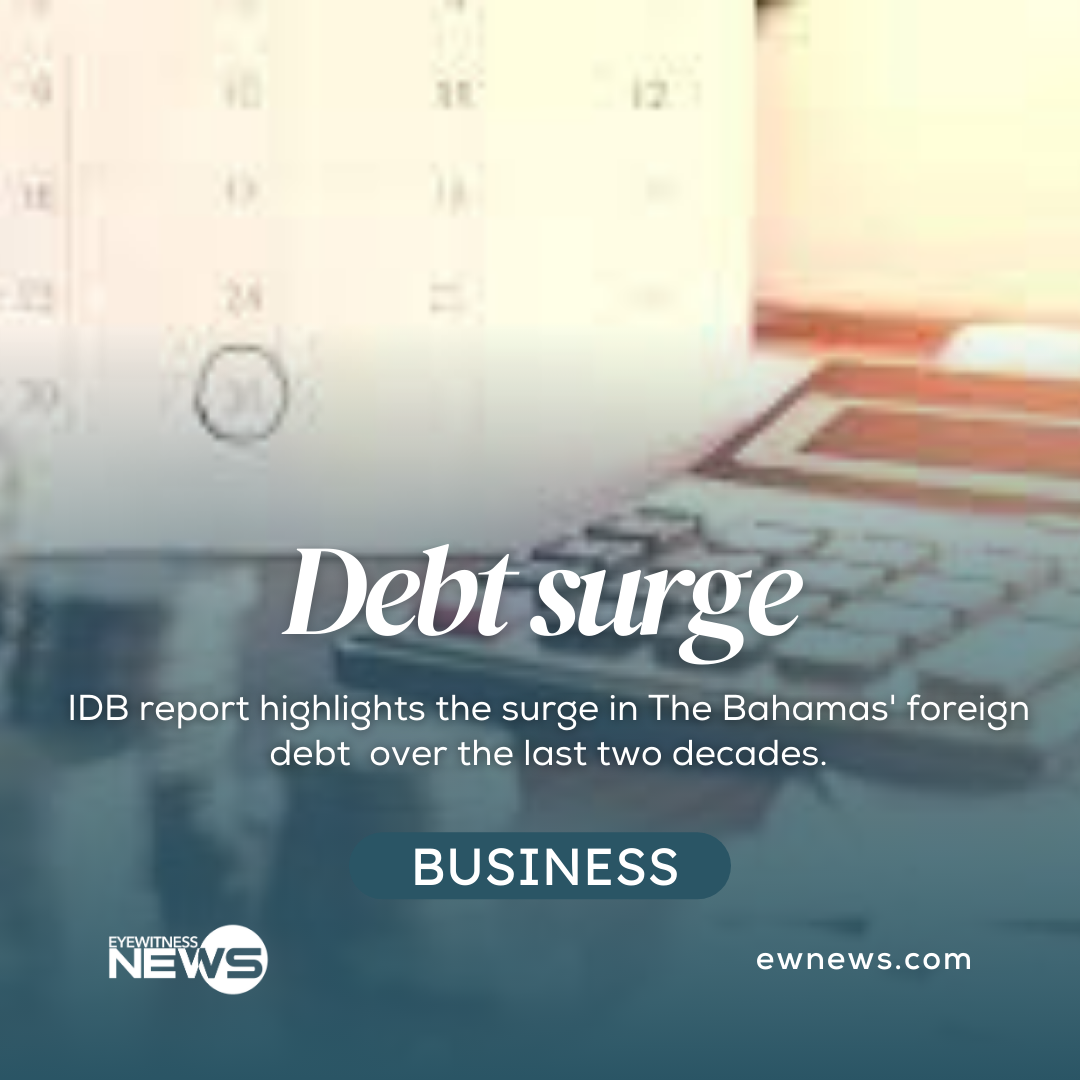NASSAU, BAHAMAS — A recently released report from the Inter-American Development Bank (IDB) highlights a significant surge in The Bahamas’ foreign debt, escalating from 13.6 percent to 44.4 percent over the last two decades, as of 2023.
The report, titled “Dealing with Debt in the Caribbean,” is part of the Caribbean Economics Quarterly report series. It delves into the economic repercussions of the recent pandemic and outlines pathways toward achieving “safe” levels of public debt for sustained economic recovery.
The report noted that during the COVID-19 pandemic, global governments increased borrowing to address the rise in unemployment and other social impacts. This response, coupled with higher spending and lower revenues, led to increased government deficits, necessitating borrowing to bridge the fiscal gaps.
The report reveals that The Bahamas’ public-debt-to-GDP ratio maintained stability during the 1990s and early 2000s (Figure 1). However, following the global economic crisis of 2009, the ratio began an upward trend, marked by inflection points in 2013, 2018, and 2020. Several factors contributed to this trend over the past decade, with notable influences stemming from GDP growth and the primary balance.
The report further noted that over the last 20 years, the external component of Bahamian public debt has increased from 13.6 percent of the total in 2004 to 44.4 percent in 2023. In terms of (remaining) maturity, 18.4 percent or BSD 1.8 billion of outstanding debt expires within one year; 24.7 percent matures within 1-3 years; 25 percent matures within 5-10 years; and the rest matures in 10 years or more By instrument, two-thirds of external debt is in the form of securities and the rest is loans (Figure 2, panel e). Domestic debt is mostly in the form of government
“External shocks such as hurricanes and the COVID-19 pandemic have resulted in large fiscal deficits, rising financing needs, and higher reliance on external borrowing for The Bahamas. Interest rates are high due to greater risk aversion of investors but also due to monetary policy actions in main global economies to contain increasing inflation,” the report stated.
Pointing to the government’s fiscal targets, the report further said: “The fiscal targets for the fiscal year 2023/2024 and upcoming years seem ambitious. The current budget expectation is that revenues will increase 14 percent above those in the revised budget for fiscal year 2022/2023 (equivalent to 2 additional percentage points of GDP in tax revenue in a single year) and that total expenditures will continue a downward trend (but recurrent expenditure will increase by 0.4 percent of GDP). This implies a primary fiscal surplus rising from US$39 million to US$486 million (3.3 percent of GDP). In this context, the fiscal goals set for this year should be monitored early to react swiftly by adjusting not only the budget goals but also the medium-term fiscal strategy.”
The report concludes with a suggestion that “Given the efforts to restore market confidence, the government could benefit from aligning its fiscal framework more closely with the historical and recent structure of the Bahamian economy.” The IDB emphasizes that there is a critical necessity and opportunity to build fiscal buffers, especially as the Bahamian economy is currently experiencing a tourism boom. In this context, the reestablishment of the Natural Disaster Fund, essentially a Macroeconomic Stabilization Fund, is proposed not only to enhance resilience against natural disasters but also to contribute to reducing the debt ratio.






